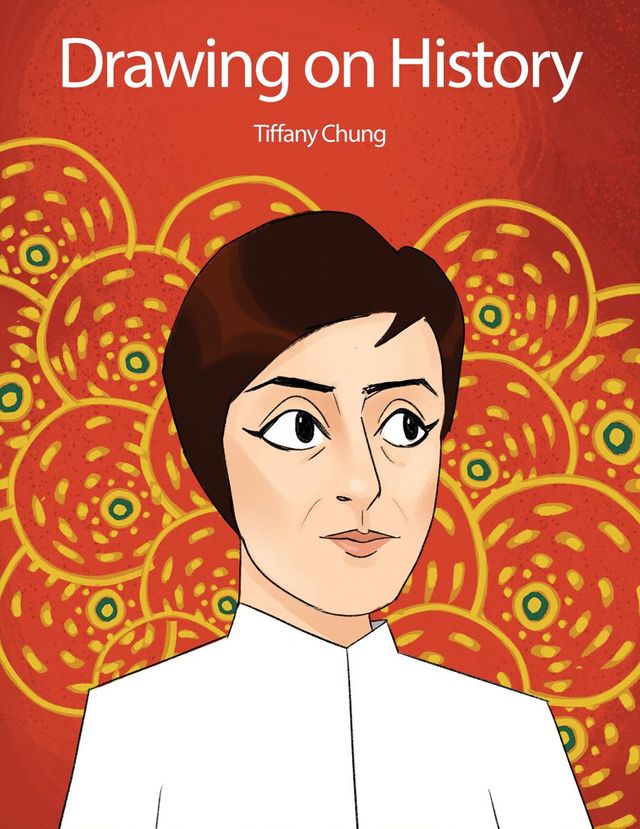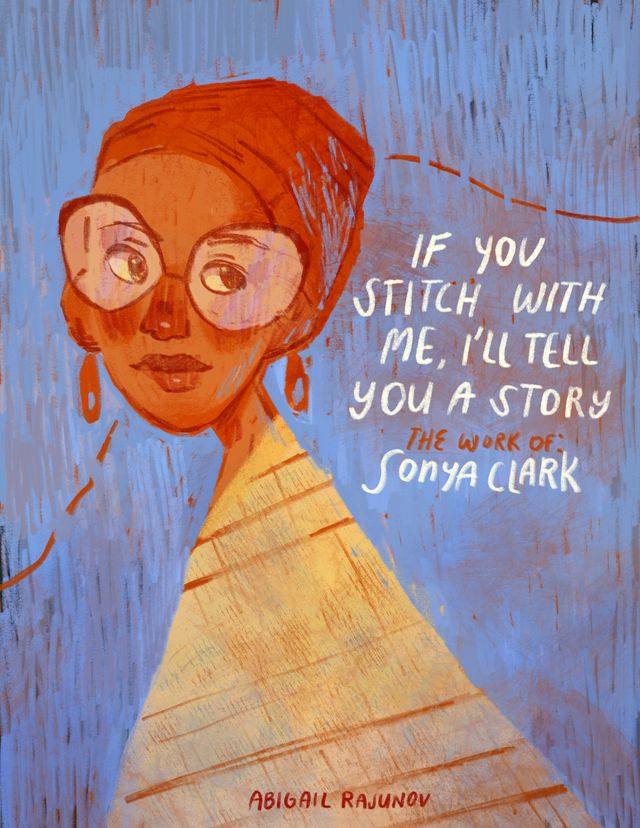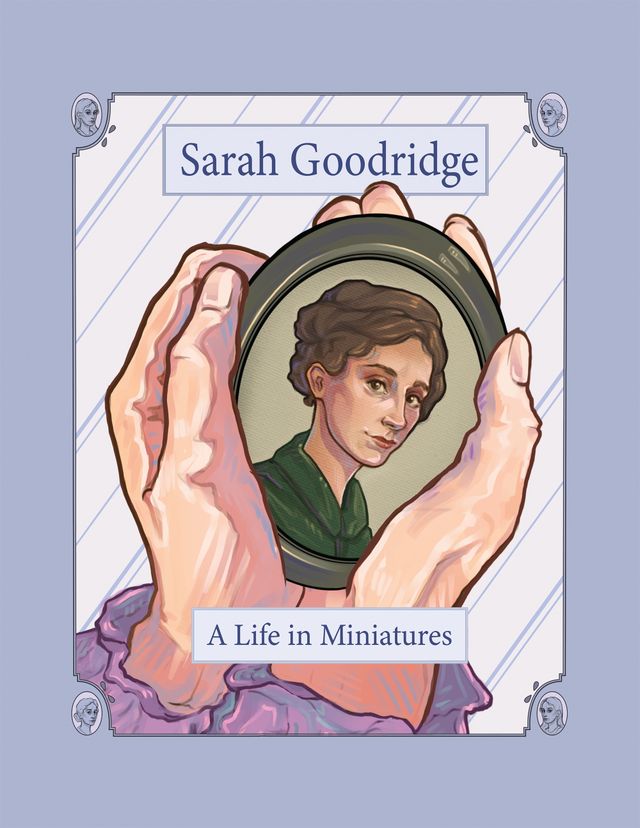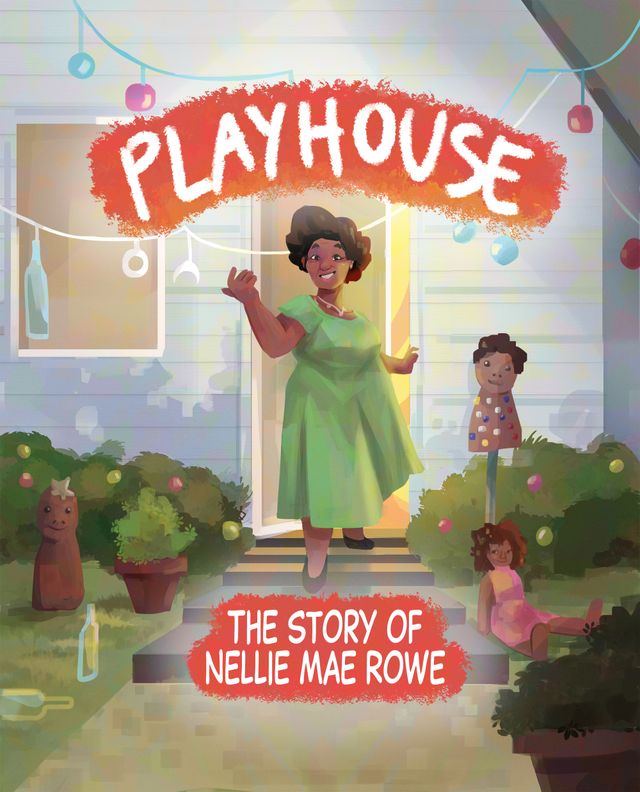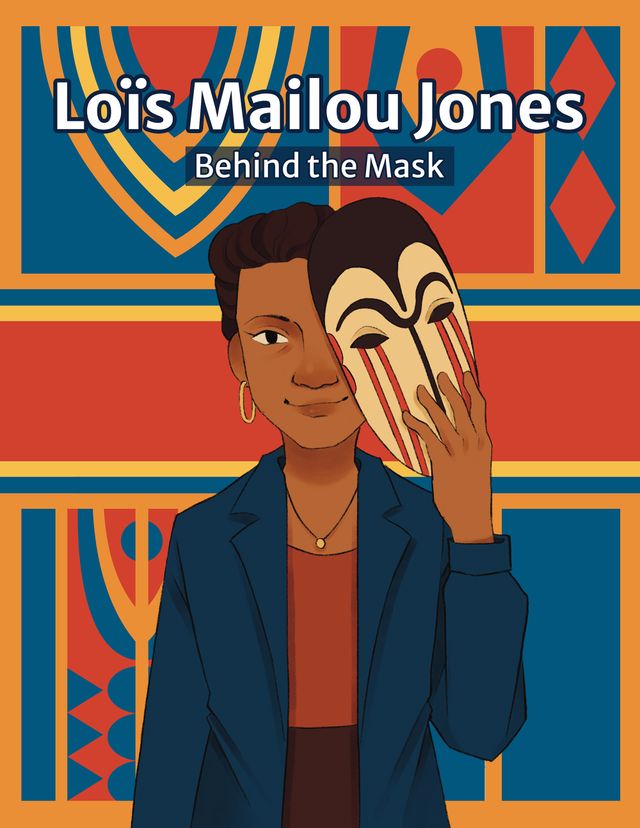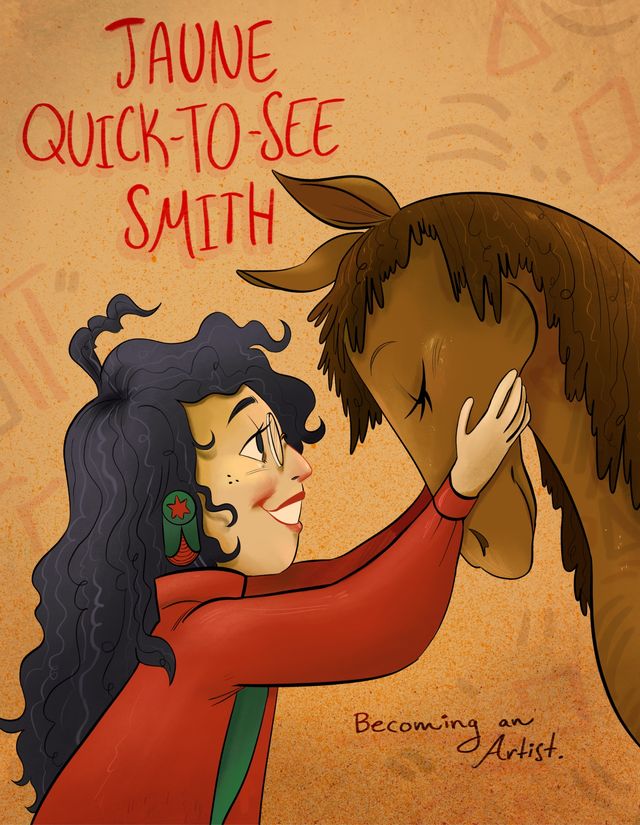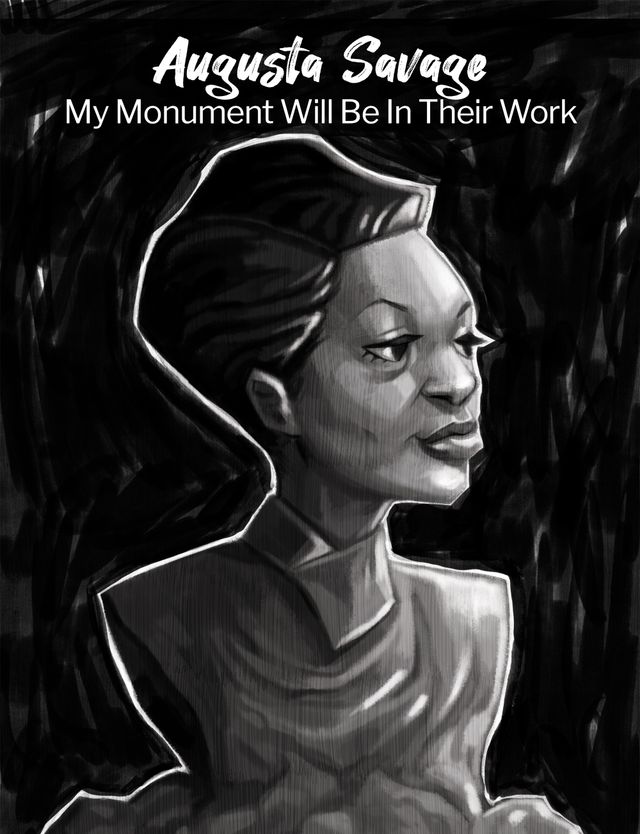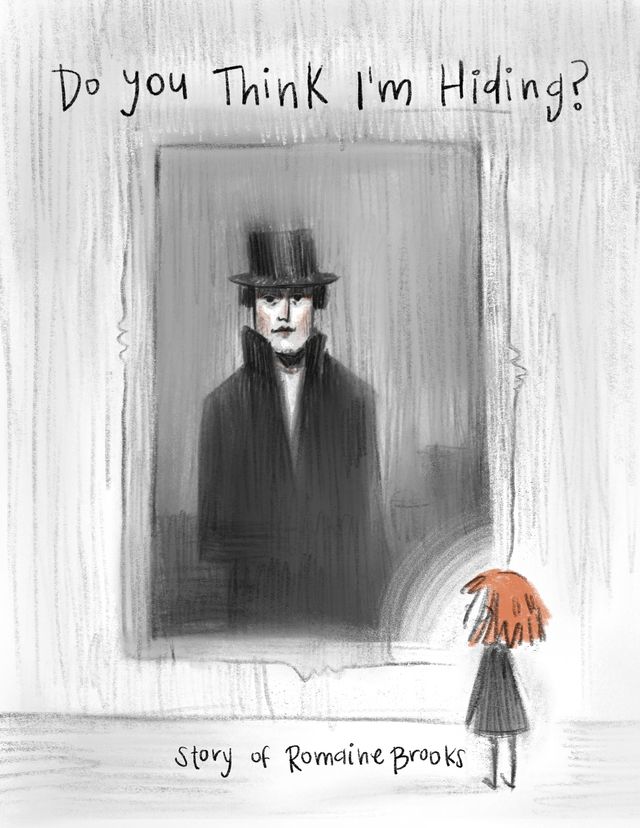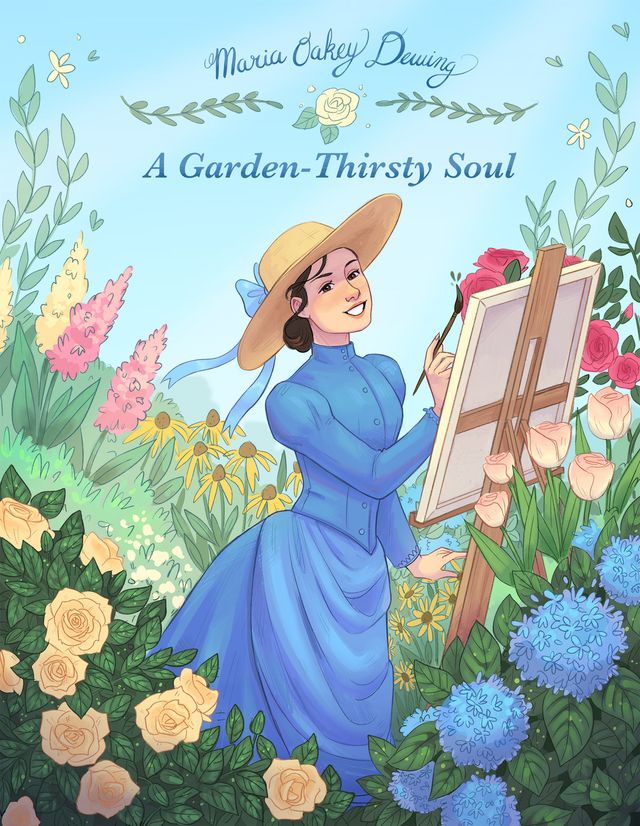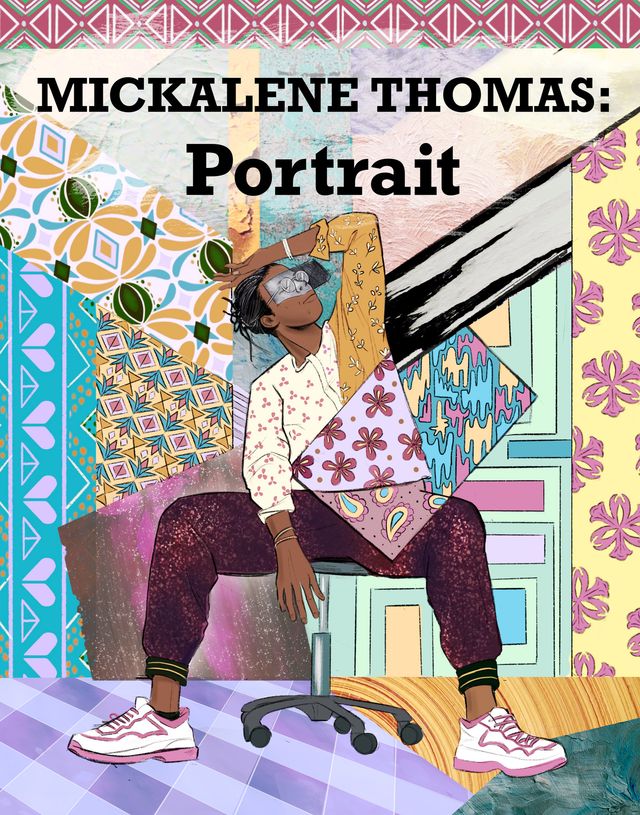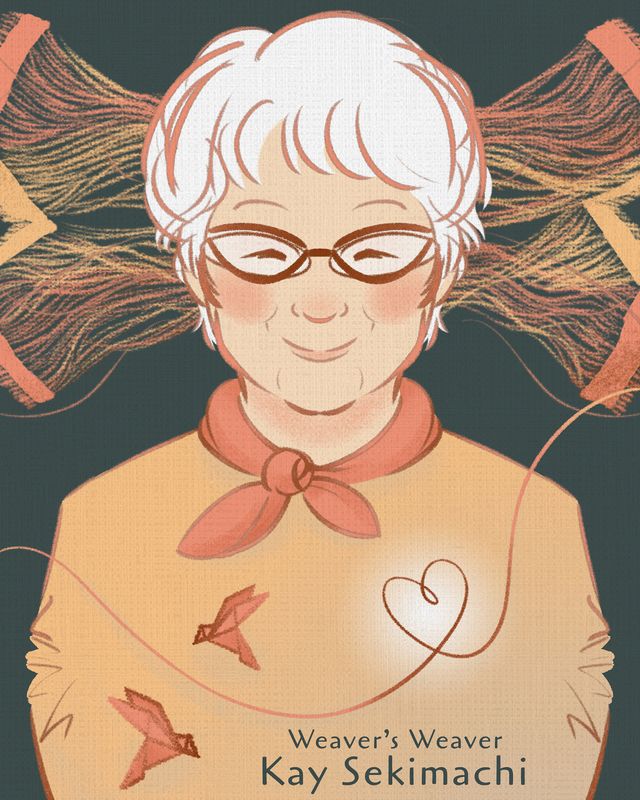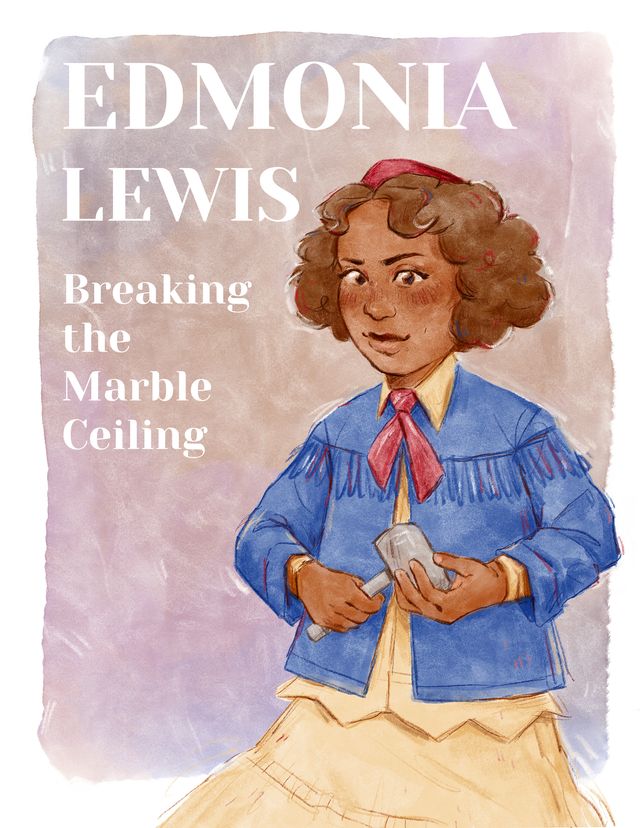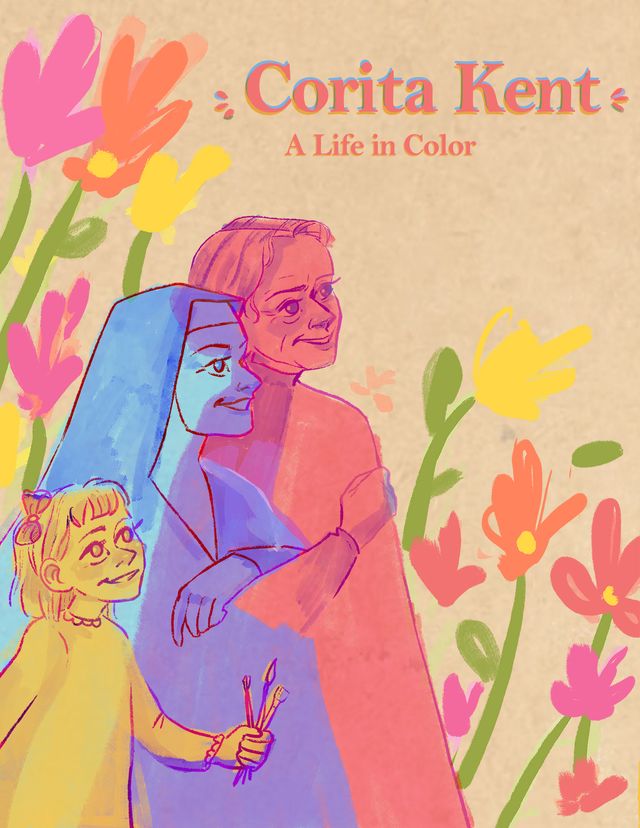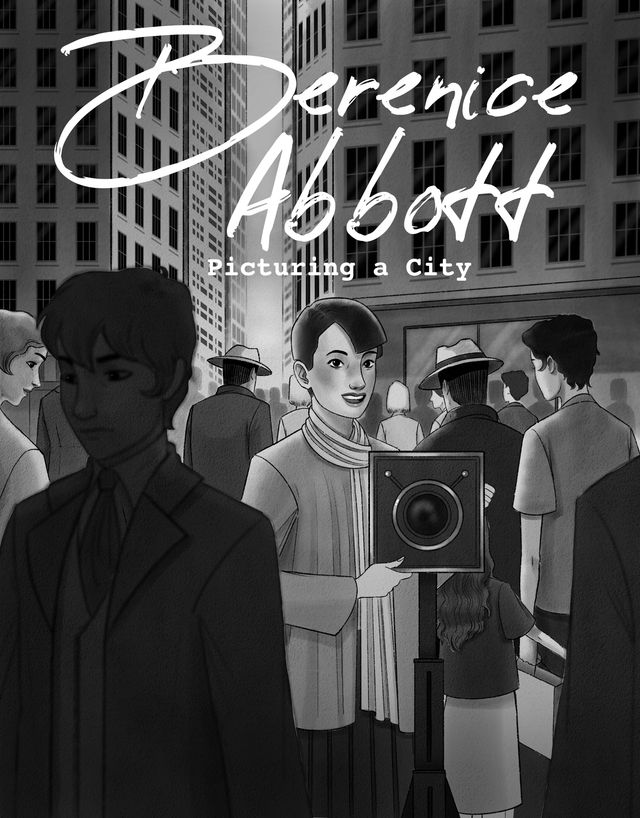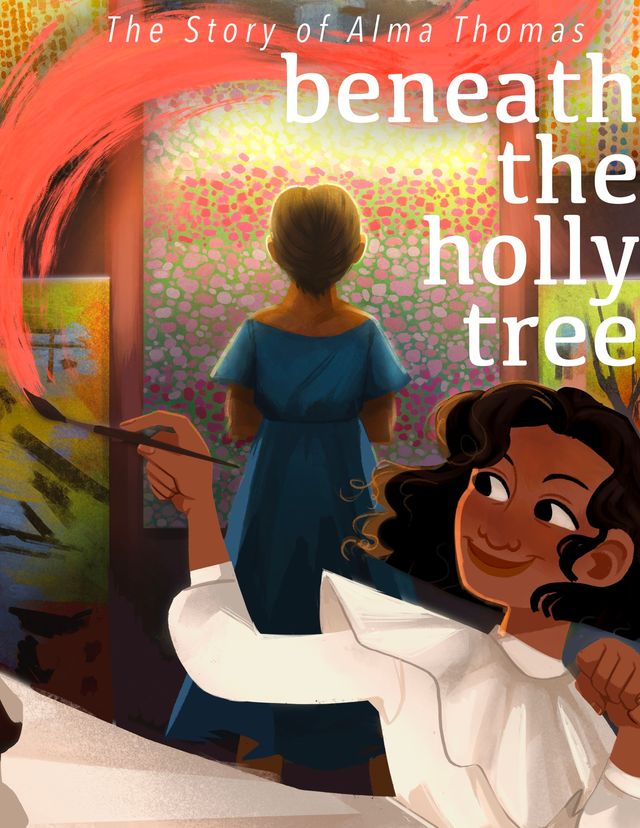This comic is part of a series Drawn to Art: Ten Tales of Inspiring Women Artists that illuminates the stories of ten women artists in the collection of the Smithsonian American Art Museum. Inspired by graphic novels, these short takes on artists’ lives were each drawn by a woman student-illustrator from the Ringling College of Art and Design
Anni Albers studied art at the innovative Bauhaus, where she discovered weaving. She fled Nazi Germany and became an influential teacher at the experimental Black Mountain College in North Carolina.

A woman with short, chin-length hair stands in profile. She is drawn with short, sketchy strokes as if drawn with a graphite pencil. Only her head and shoulders are within the frame. Behind her is a maze of thick red lines. Text reads, “Anni Albers: Threads of History.”
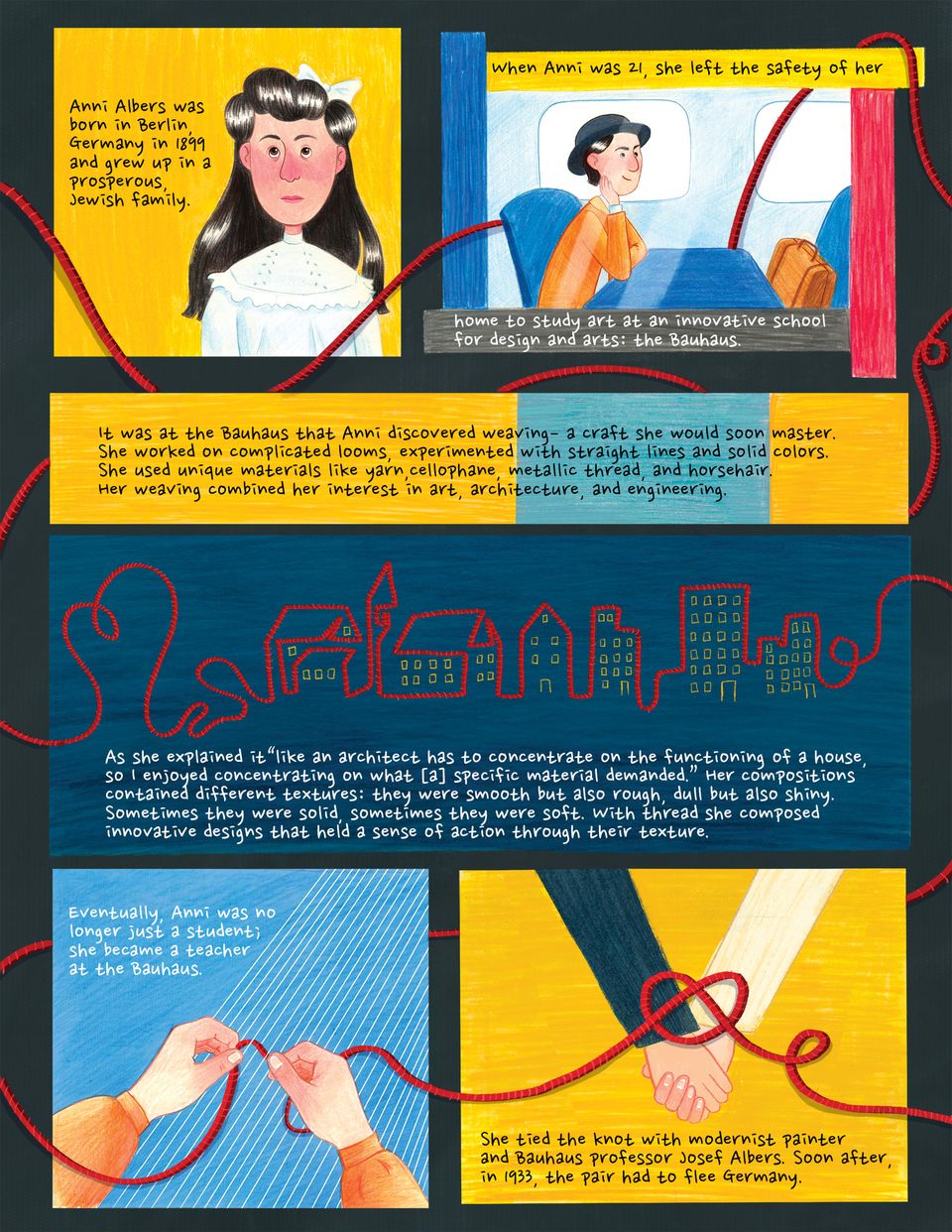
Panel one: A young girl in a frilly white dress with a white bow in her long brown hair is standing against a yellow background. Text reads, “Anni Albers was born in Berlin, Germany in 1899 and grew up in a prosperous Jewish family.” Panel two: The same young woman is wearing a black hat and an orange coat and sits at a table on a train. Her suitcase sits on the bench opposite her. She is resting her chin in her hand, looking pensively out of the window. Text reads, “When Anni was 21, she left the safety of her home to study art at an innovative school for design and the arts: the Bauhaus.” A red thread weaves around and throughout the panels. Beneath the top two panels is appears in a yellow rectangle with a smaller teal portion in the middle of the shape with tex. Text reads, “It was at the Bauhaus that Anni discovered weaving – a craft she would soon master. She worked on complicated looms, experimented with straight lines and solid colors. She used unique materials like yarn, cellophane, metallic thread, and horsehair. Her weaving combined her interest in art, architecture, and engineering.” Panel three: Underneath the yellow text box, the same line of red thread that runs through the panels on the page forms a curving outline of houses and the skyline. The thread runs on a dark blue background, and yellow windows are outlined as if at night. Text reads, “As she explained it ‘like an architect has to concentrate on the functioning of a house, so I enjoyed concentrating on what [a] specific material demanded.’ Her compositions contained different textures: they were smooth but also rough, dull but also shiny. Sometimes they were solid, and sometimes they were soft. With thread, she composed innovative designs that held a sense of action through their texture.” The last two panels are at the bottom of the page.Panel four: A light blue square with white threads running diagonally across. The threads are the vertical warp threads of a loom. Two hands are in front, weaving the red thread from the panels above horizontally over and under the warp threads. Text reads, “Eventually, Anni was no longer just a student; she became a teacher at the Bauhaus.” Finally, the red thread from the panel to the left runs into the next panel. Panel five: Across a yellow square, the red thread forms a heart-shaped knot in the center. Underneath the knot is a man and a woman’s hands clasped together. Only the blue of his sleeve and the white long sleeve of her dress are in the panel. They are holding hands against a yellow background. Text reads, “She tied the knot with modernist painter and Bauhaus professor Josef Albers. Soon after, in 1933, the pair had to flee Germany.”
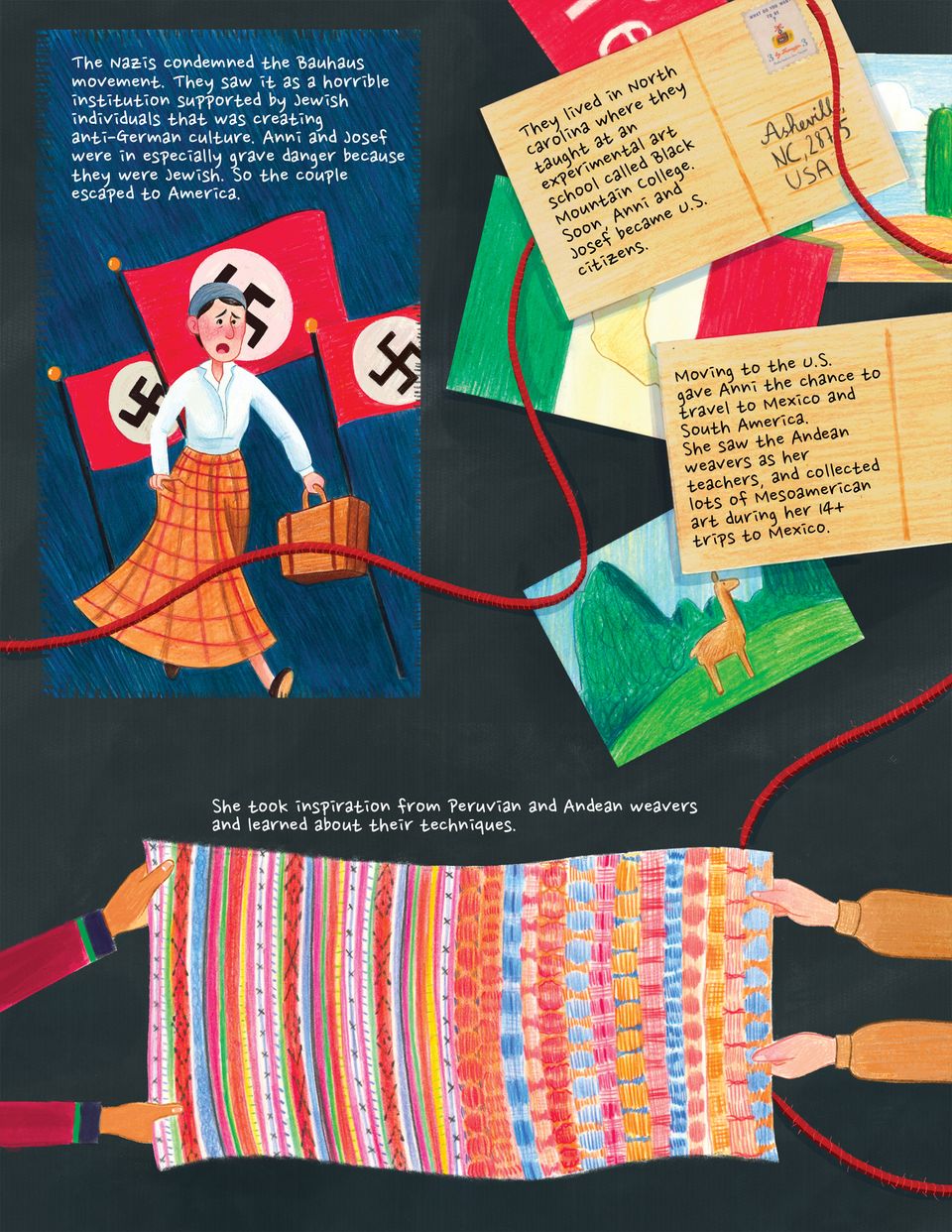
Panel one: A woman with a look of grief on her face is walking with one foot in front of the other. She is wearing a white button-up blouse, a long orange plaid skirt, a gray head covering, and plain black shoes. She carries a small suitcase in her left hand and holding her long skirt up in her right. Behind her are Nazi flags with swastikas in the center on a dark blue background. The line of red thread continues through the image. Text reads, “The Nazis condemned the Bauhaus movement. They saw it as a horrible institution supported by Jewish individuals that was creating anti-German culture. Anni and Josef were in especially grave danger because they were Jewish. So, the couple escaped to America.” Panel two: Postcards are scattered across the panel. The line of red thread is winding through them. The fronts of the postcards that are visible in the stack have images of a map of Mexico, a llama standing in a field, and a desert scene with cacti. Two postcards are shown with the backside up. Text on the postcard at the top of the panel reads, “They lived in North Carolina where they taught at an experimental art school called Black Mountain College. Soon, Anni and Josef became U.S. citizens.” The mailing address on the postcard says Asheville, NC, USA. Text on the bottom postcard says, “Moving to the U.S. gave Anni the chance to travel to Mexico and South America. She saw the Andean weavers as her teachers and collected lots of Mesoamerican art during her 14+ trips to Mexico.” Across the bottom of the page, two pairs of hands on either side of the panel are holding a stretched-out, colorful woven blanket. The blanket is drawn in short, sketchy strokes to show stripes and the woven texture of the textile. Text reads, “She took inspiration from Peruvian and Andean weavers and learned about their techniques.”
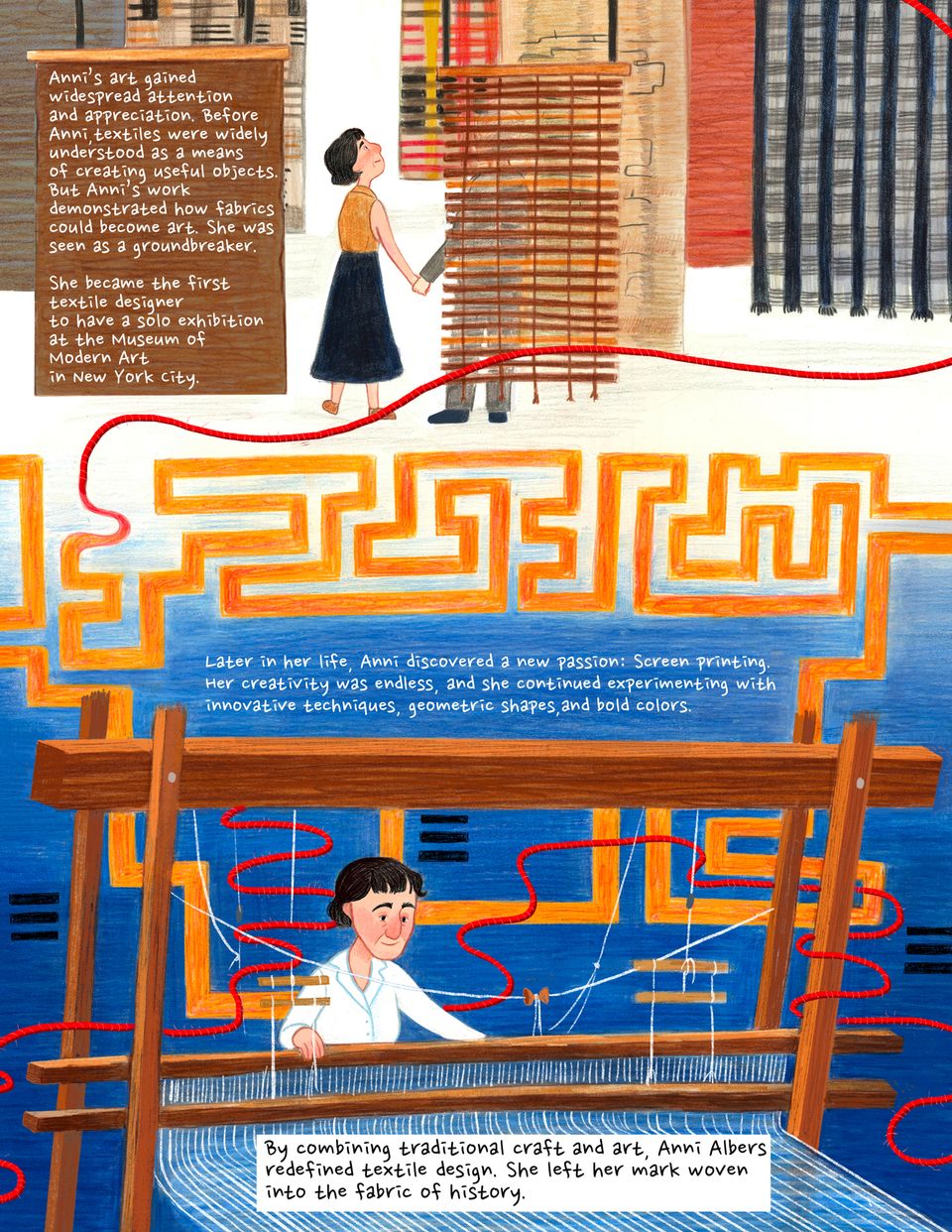
Across the top of the page, a woman with short black hair and wearing a sleeveless orange top and black skirt is holding hands with a man who is hidden by a loosely woven textile suspended from the ceiling. They stand in a room with woven textiles hanging from the ceiling. Text reads, “Anni’s art gained widespread attention and appreciation. Before Anni, textiles were widely understood as a means for creating useful objects. But Anni’s work demonstrated how fabrics could become art. She was seen as a groundbreaker. She became the first textile designer to have a solo exhibition at the Museum of Modern Art in New York City.” In the bottom half of the page, the artist, shown as an older woman with short, dark hair and a white button-up shirt, is sitting at a wide floor loom. The loom is warped with white thread. Behind her, the line of red thread continues to run throughout the image, connecting it with the panel above. The same thick red maze from the cover runs behind the figure and below the panel above. Inside of the maze is the text “Later in life, Anni discovered a new passion, screen printing. Her creativity was endless, and she continued experimenting with innovative techniques, geometric shapes, and bold colors.” The text below her reads, “By combining traditional craft and art, Anni Albers redefined textile design. She left her mark woven into the fabric of history.”
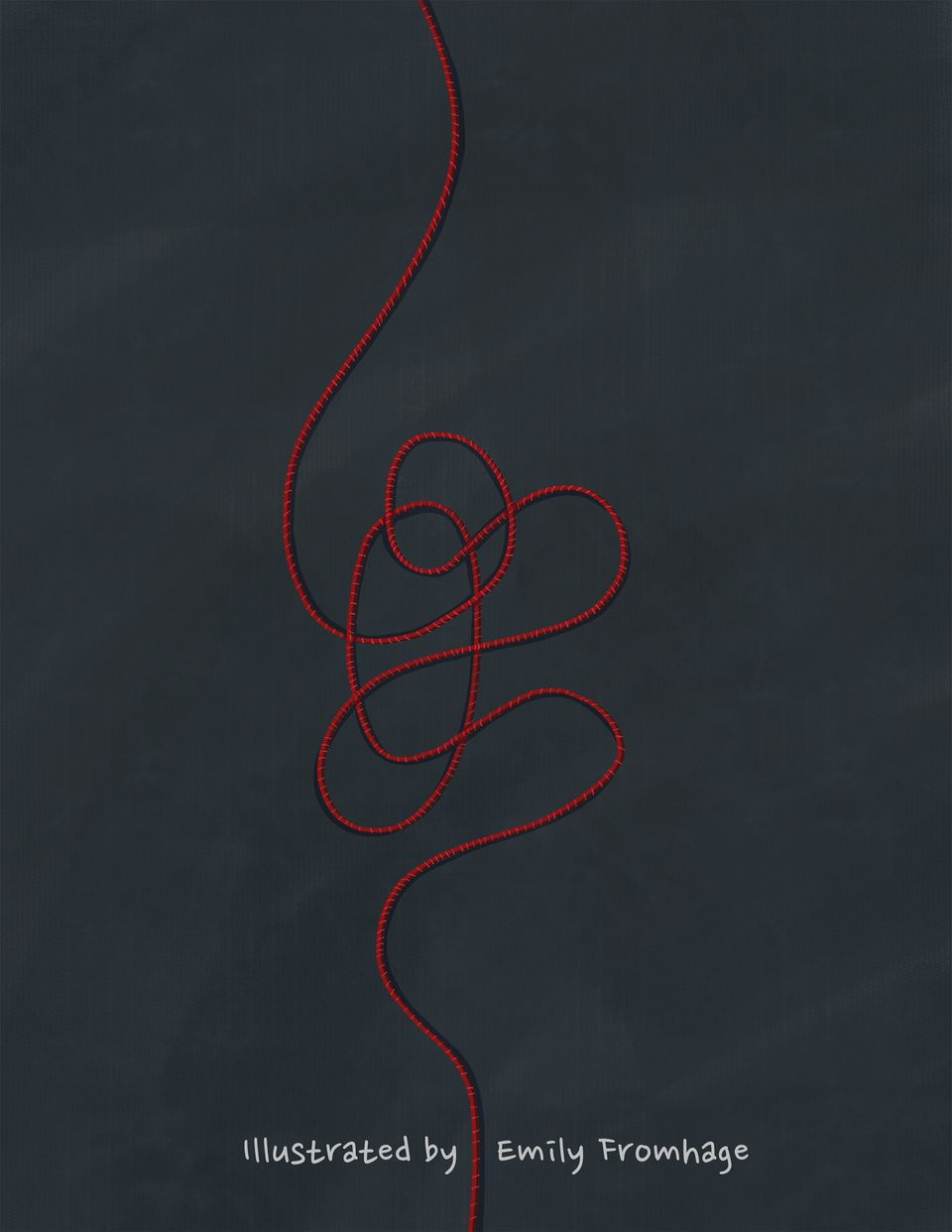
The page is dark gray with a red thread winding down the length of the page. Text at the bottom reads, “Illustrated by Emily Fromhage.”














